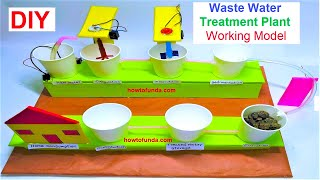Introduction
Water is the most vital resource on Earth, essential for all forms of life. Approximately 71% of the Earth’s surface is covered with water, but only 3% is freshwater, and a significant portion of it is inaccessible as it is locked in glaciers, ice caps, or underground.

Rapid population growth, industrialization, urbanization, and climate change have led to water scarcity in many regions, making water conservation critical for sustainability.
Water conservation refers to the practice of using water efficiently to reduce wastage and ensure sustainable availability for present and future generations. Conserving water is essential for drinking, agriculture, industry, and maintaining ecological balance.
Definition of Water Conservation
Water conservation is the planned management of water resources to prevent wastage, protect water quality, and ensure the availability of water for human consumption, agriculture, and ecosystem needs.
Importance of Water Conservation
- Human Survival – Clean water is essential for drinking, cooking, and sanitation.
- Agriculture – Irrigation requires large amounts of water; conservation ensures food security.
- Industrial Use – Industries rely on water for production, cooling, and processing.
- Environmental Balance – Conserving water maintains wetlands, rivers, lakes, and aquatic ecosystems.
- Climate Change Mitigation – Efficient water use reduces pressure on natural water sources during droughts.
Causes of Water Scarcity
- Population Growth – More people increase demand for water.
- Urbanization – Expansion of cities reduces natural water bodies and increases consumption.
- Industrialization – Factories use large quantities of water and often pollute it.
- Agricultural Practices – Over-irrigation, water-intensive crops, and inefficient techniques waste water.
- Climate Change – Altered rainfall patterns, droughts, and melting glaciers reduce freshwater availability.
- Pollution – Contamination of rivers, lakes, and groundwater makes water unusable.
Methods of Water Conservation

1. Rainwater Harvesting
- Collecting and storing rainwater for future use.
- Techniques: Rooftop harvesting, ponds, tanks, check dams.
- Advantages: Increases groundwater levels, reduces dependency on municipal water supply, prevents floods.
2. Efficient Irrigation Techniques
- Drip Irrigation – Delivers water directly to plant roots, reducing wastage.
- Sprinkler Irrigation – Sprays water evenly over crops.
- Mulching – Covers soil to retain moisture and reduce evaporation.
3. Industrial Water Conservation
- Recycling and reusing water in factories.
- Treating wastewater before discharge.
- Installing water-efficient machinery.
4. Domestic Water Conservation
- Fixing leaks in taps and pipes.
- Using water-saving devices like low-flow faucets, showers, and dual-flush toilets.
- Avoiding unnecessary water use (e.g., turning off taps while brushing teeth).
5. Agricultural Water Management
- Planting drought-resistant crops.
- Using crop rotation and soil moisture retention methods.
- Scheduling irrigation based on weather and soil moisture.
6. Groundwater Recharge
- Constructing percolation pits and recharge wells.
- Protecting wetlands and ponds to allow infiltration.
Water Conservation in Urban Areas

- Rainwater Harvesting – Installing rooftop tanks in homes and schools.
- Reuse of Treated Wastewater – For gardening, cleaning, and industrial purposes.
- Awareness Campaigns – Educating citizens on the importance of water conservation.
- Smart Water Management Systems – Using sensors and meters to monitor water use.
Government Initiatives in India
- Jal Shakti Abhiyan – Focuses on water conservation and rainwater harvesting in rural and urban areas.
- National Water Mission – Aims to ensure integrated water resource management.
- Pradhan Mantri Krishi Sinchayee Yojana (PMKSY) – Promotes efficient irrigation and water conservation in agriculture.
- Narmada Water Conservation Project – Focuses on river basin management and groundwater recharge.
Global Water Conservation Efforts
- UN Water Goals – United Nations Sustainable Development Goal 6 aims to ensure availability and sustainable management of water for all.
- Water Recycling and Reuse Programs – Implemented in countries like Singapore and Israel.
- Awareness Campaigns – “World Water Day” promotes water-saving practices worldwide.
- Desalination Projects – Converting seawater to freshwater in arid regions.
Effects of Water Mismanagement
Experiments and Demonstrations for Project File

1. Rainwater Harvesting Model
- Materials: Small tank, gutter pipes, funnel, and collection bottle.
- Demonstration: Show how rainwater can be collected and stored for domestic use.
2. Water Filtration Model
- Materials: Gravel, sand, charcoal, and cloth.
- Demonstration: Filter dirty water to show how suspended particles are removed.
3. Evaporation and Condensation Experiment
- Show water cycle on a small scale using a bowl, plastic sheet, and sunlight.
- Demonstrates natural water conservation through precipitation.
4. Drip Irrigation Model
- Materials: Small plants, water container, tubes.
- Demonstration: Show how water is delivered directly to roots, reducing wastage.
Conclusion
Water is a precious and finite resource. Conserving it is essential for human survival, agriculture, industry, and maintaining ecological balance.
Water conservation requires cooperation from individuals, communities, governments, and industries.
Practices like rainwater harvesting, efficient irrigation, wastewater treatment, and public awareness can help mitigate water scarcity.
By adopting these measures, we can ensure sustainable water availability for future generations and protect the planet’s ecosystems.

